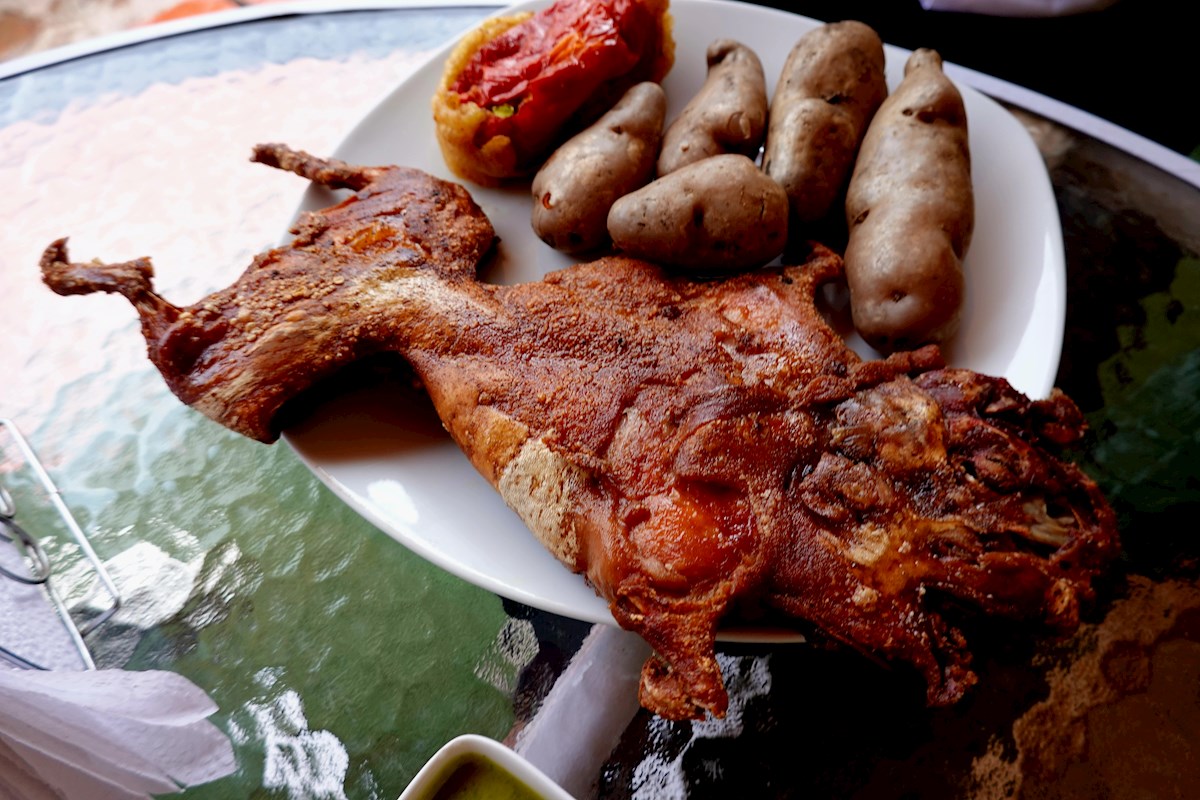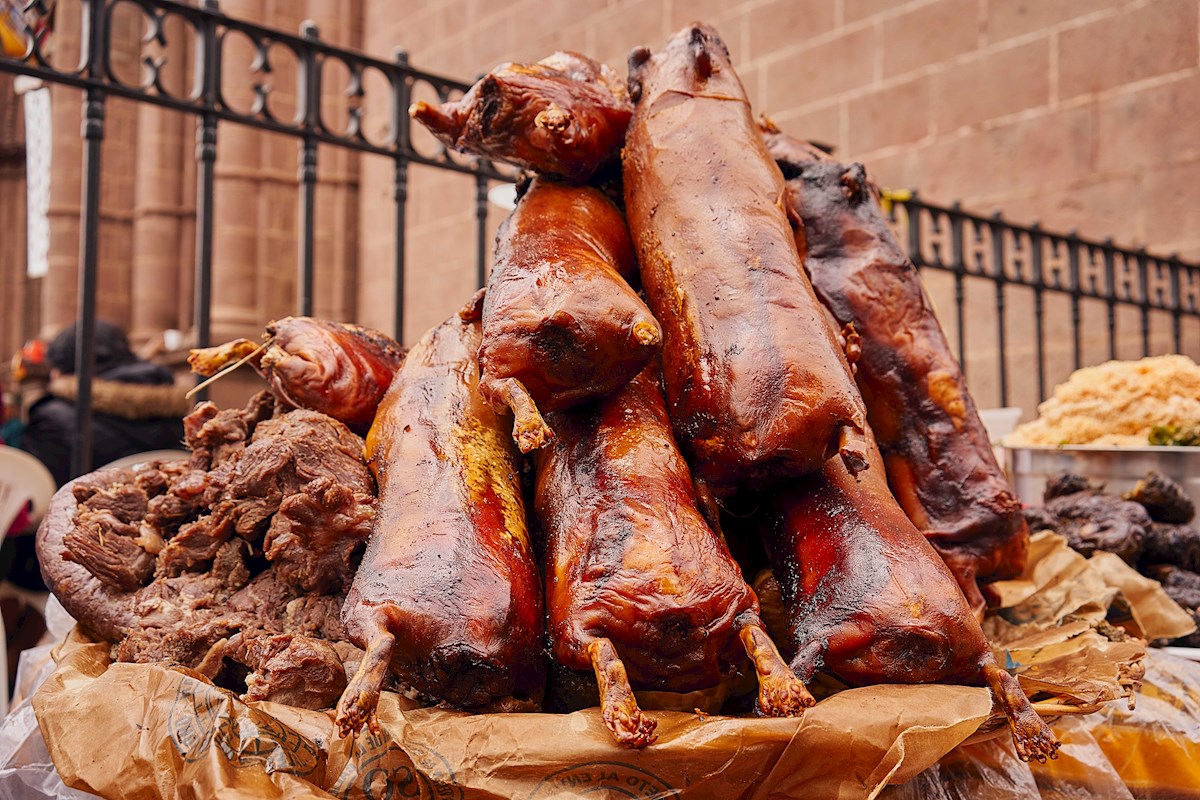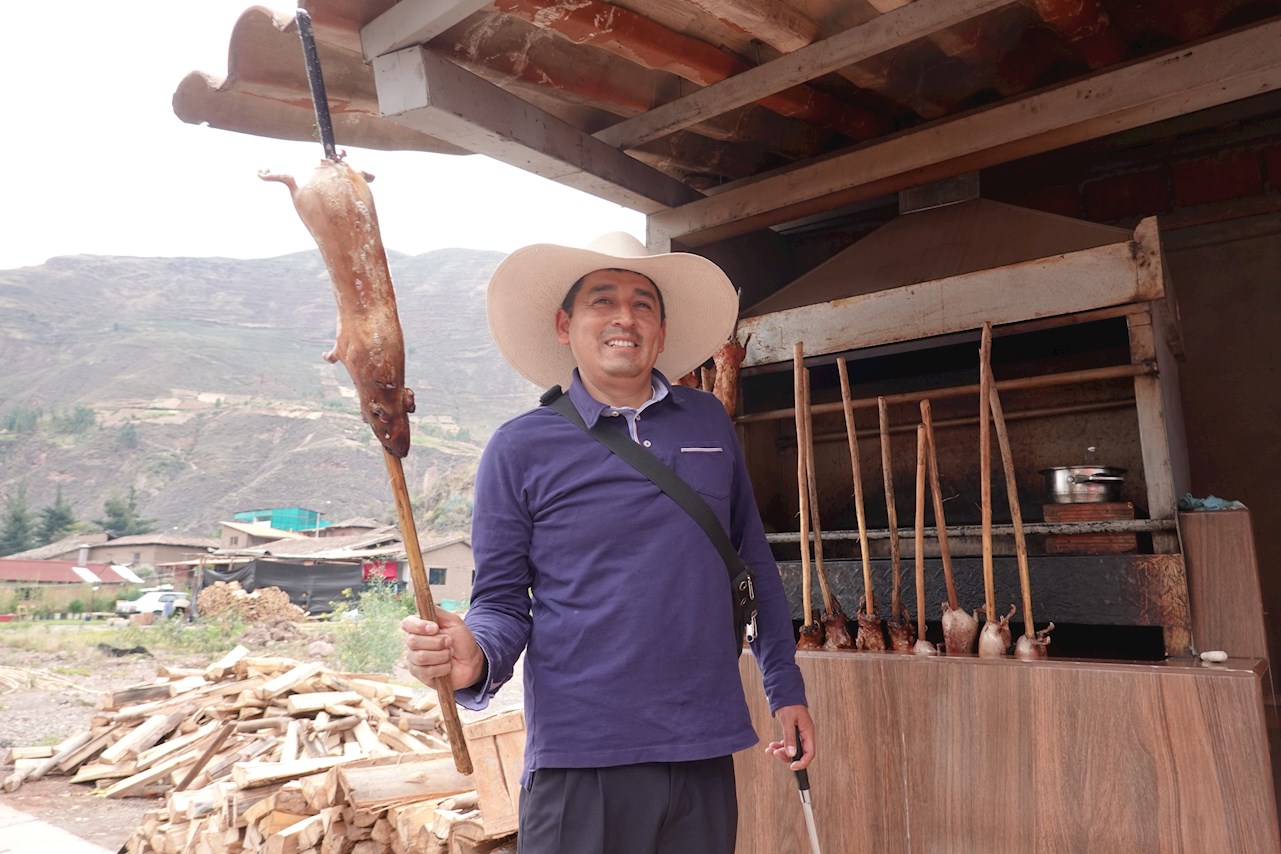In the tapestry of Peruvian cuisine, one thread weaves a path that is at once deeply traditional and simultaneously controversial to outsiders: the consumption of cuy, or guinea pig. Integral to Peruvian culinary history and lauded for its delicate flavor, cuy has fostered culinary tourism while also provoking ethical and cultural debates amongst visitors from Western nations.
 Credits: Shutterstock
Credits: Shutterstock
The Tradition of Eating Guinea Pig
Before encountering its reputation as a beloved pet in the Western world, the cuy was first and foremost a source of sustenance in the Andean region. The history of cuy in Peru is steeped in the ancient traditions of the Inca civilization, where it was considered not only a valuable protein source but also a creature of significant cultural and even spiritual importance.
 Credits: Shutterstock
Credits: Shutterstock
Archaeological evidence, such as cuy-shaped vessels and depictions in ancient artwork, demonstrates the long-standing presence of these small mammals in Peruvian society, far preceding Spanish colonization. In the altitudinous realms of the Andes, where raising larger livestock was (and remains) a challenge, cuy became a dietary staple due to its ease of rearing and nutritional density.
The cuy was more than just sustenance; it played a crucial role in rituals and ceremonies, symbolizing fertility, abundance, and prosperity. One of the most significant traditions involving cuy is the festival of Inti Raymi, the Incan Festival of the Sun. During this annual celebration, cuy was offered as a sacrifice to the sun god, Inti, in gratitude for a bountiful harvest. This ritualistic use of cuy reflects its sacred status in the Andean culture.
Cuy: The Culinary Delight
Today, cuy remains an essential part of Peruvian cuisine, beloved by locals and adventurous travelers alike. It is prepared in various ways, each showcasing the culinary skills and creativity of Peruvian chefs. One of the most popular ways to enjoy cuy is fried. The guinea pig is seasoned with local spices, deep-fried until golden and crispy, and served with a side of potatoes and salad. The result is a dish that combines crunchy textures with rich, flavorful meat.
 Credits: Matija Babić
Credits: Matija Babić
Another traditional preparation method is "cuy al horno," or roasted guinea pig. In this dish, the cuy is marinated with herbs and spices, then slow-roasted until tender and succulent. It is often accompanied by local vegetables and aji sauce for added flavor.Each preparation method tells a story, reflecting the local ingredients, indigenous influences, and colonial impacts that have shaped Peruvian culinary landscapes. Despite being the same animal, the myriad of ways in which cuy is prepared and presented across Peru provides a fascinating lens through which to explore the nation’s diverse culinary and cultural identities.
A Cultural Delicacy Amidst Global Controversy
The history of cuy in Peru is intertwined with the country's complex past. When the Spanish conquistadors arrived in Peru in the 16th century, they encountered the indigenous tradition of eating cuy. Initially, they considered it a barbaric practice, but over time, they began to appreciate its taste. Cuy eventually became a symbol of resistance against colonial rule, as Peruvians clung to their culinary traditions in the face of cultural assimilation. In contemporary Peru, cuy is enjoyed both in rural villages and upscale restaurants. It continues to hold cultural significance, often appearing on special occasions and as a symbol of national pride.
 Credits: Shutterstock
Credits: Shutterstock
The National Day of Cuy in Peru is a significant event that highlights the cultural importance of this traditional dish. Celebrated on the second Friday in October, this day serves as a reminder of the enduring connection between the Peruvian people and cuy. It is a time when communities come together to honor their heritage, share cuy dishes, and participate in cultural festivities.
 Credits: Shutterstock
Credits: Shutterstock
While the consumption of cuy is deeply embedded in Peruvian tradition, the practice still raises eyebrows and ethical questions amongst many Western visitors. Guinea pigs, recognized predominantly as pets in nations like the United States and the United Kingdom, enjoy a status that starkly contrasts with their culinary classification in Peru.
This dichotomy invites a dialogue on cultural relativism and the ethics of food consumption. Must our Western predispositions towards certain animals impede our appreciation and understanding of other cultures’ culinary practices? This friction has incited both critique and curiosity, fostering a space where cultural norms, ethical considerations, and the universal act of sustenance converge and often clash.




